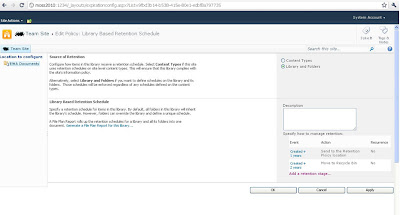If you are using SharePoint object model, then it
is very much important to correctly release resources. It should ensure that
any unmannaged resources should be released as soon as they are no longer
needed.Though garbage collector automatically releases memory allocated to
unused objects, but it will release ina unpredictable manner. The .NET
Framework provides the IDisposable interface, which exposes a Dispose method
that you should call to explicitly release these unmanaged resources. To invoke
Dispose method, you can use the using keyword, you can use the try/finaly code
block or you can explicitely invoke Dispose method.
Example of using keyword:
using (SPSite site = new SPSite("URL of the Site Collection"))
{
// Code here
}
Internally the compiler converts the using block to try/finally block as shown below.
SPSite site = null;
try
{
site = new SPSite("URL of the Site Collection");
// Code here
}
finally
{
if (site != null)
site.Dispose();
}
The SPSite and SPWeb types both implement the IDisposable interface, and both allocate unmanaged memory. If you do not correctly release SPSite and SPWeb instances, you will probably experience memory leaks, crashes, and frequent application pool recycles.
But if they are derived from the context object then the framework will take care of releasing resources, you should not release the resources.
For example SPWeb web = new SPSite(SPContext.Current.Web.Url).OpenWeb().
Here the web object is derived from the SPContext, so we should not dispose that. Here SPWeb object web.Dispose() automatically called.
using (SPSite site = new SPSite("URL of the Site Collection"))
{
// Code here
}
Internally the compiler converts the using block to try/finally block as shown below.
SPSite site = null;
try
{
site = new SPSite("URL of the Site Collection");
// Code here
}
finally
{
if (site != null)
site.Dispose();
}
The SPSite and SPWeb types both implement the IDisposable interface, and both allocate unmanaged memory. If you do not correctly release SPSite and SPWeb instances, you will probably experience memory leaks, crashes, and frequent application pool recycles.
But if they are derived from the context object then the framework will take care of releasing resources, you should not release the resources.
For example SPWeb web = new SPSite(SPContext.Current.Web.Url).OpenWeb().
Here the web object is derived from the SPContext, so we should not dispose that. Here SPWeb object web.Dispose() automatically called.




























